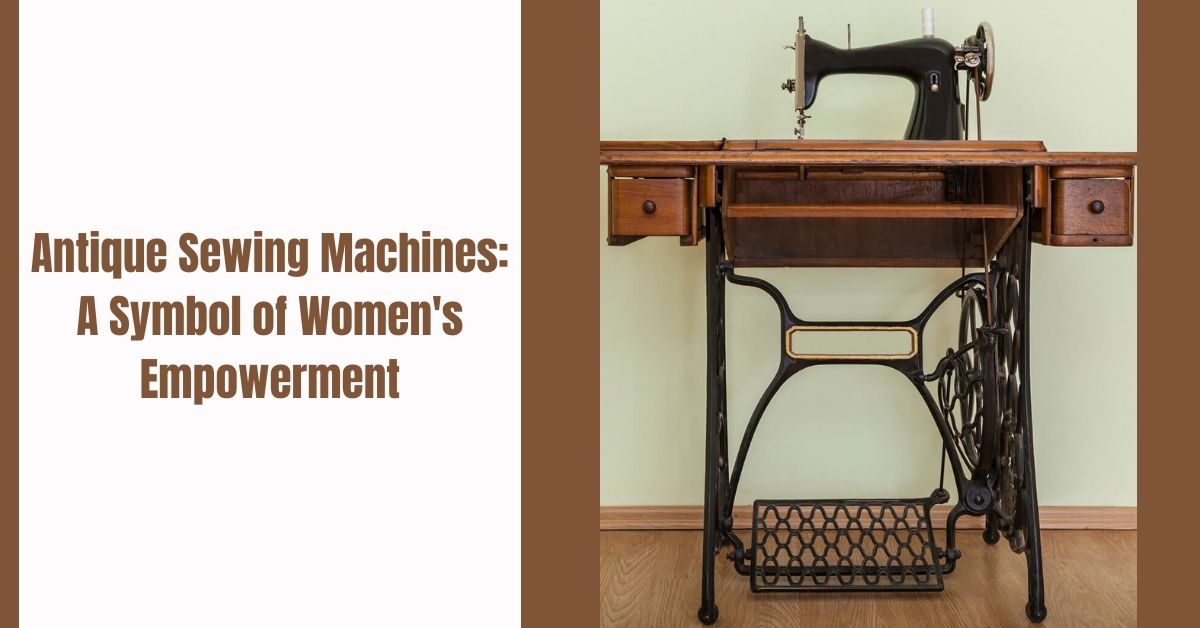Antique sewing machines are not only beautiful and functional, but also have a rich history that reflects the social and economic changes of their times. In this article, we will explore how antique sewing machines were invented, improved, and used by women in different contexts, and how they can be seen as a symbol of women’s empowerment.
Invention of the Sewing Machine
The first attempts to create a mechanical sewing machine date back to the late 1700s, but none of them were successful or widely adopted. The first patent for a complete sewing machine was issued to Thomas Saint, an English cabinet maker, in 1790, but it is not known if he ever built a working prototype .
The first functional Sewing Machine was invented by Barthelemy Thimonnier, a French tailor, in 1830. His machine used a single thread and a hooked needle to make a chain stitch, similar to embroidery. Thimonnier’s invention was met with hostility by other tailors, who feared losing their jobs and burned down his factory .
In 1834, Walter Hunt, an American inventor, built the first sewing machine that used two threads and a curved needle to create a lockstitch. However, he did not patent his invention because he thought it would cause unemployment .
The first patented sewing machine in the U.S. was developed by Elias Howe, who improved on Hunt’s design and added a shuttle to carry the lower thread. Howe struggled to market his machine and faced patent infringement lawsuits from other inventors .
The most successful Leather Sewing Machines manufacturer was Isaac Singer, who patented his version of the machine in 1851. Singer’s machine used a straight needle that moved up and down, a foot pedal to power the machine, and an adjustable tension mechanism. Singer also introduced mass production, interchangeable parts, and installment payment plans for his machines .
Improvement of the Sewing Machine
The sewing machine underwent many improvements and innovations throughout the late 1800s and early 1900s. Some of the most notable ones include:
The presser foot:
This device holds the fabric in place as it feeds through the machine. It was invented around 1900 and made sewing easier and faster .
The cabinet:
Many sewing machines were sold in wooden or cast iron cabinets that could store the machine when not in use and serve as a sewing table. Some cabinets had drawers or cupboards for storing sewing supplies and accessories .
The treadle:
This is a pedal that is rocked by the foot to spin a wheel that powers the machine. It was patented by Singer in 1850 and replaced the hand crank as the main source of power for sewing machines .
The electric motor:
The first electric sewing machines were introduced in the 1880s, but they did not become popular until the 1920s. Electric motors made sewing machines more efficient and convenient .
The zigzag stitch:
This is a type of stitch that forms a zigzag pattern on the fabric. It is useful for sewing stretchy fabrics, reinforcing seams, and making decorative designs. The first zigzag stitch machines were produced in the 1930s .
Use of the Sewing Machine by Women
The sewing machine had a significant impact on the lives of women in different ways. Some of the main aspects are:
Domestic work:
The sewing machine reduced the time and labor required for making and mending clothes at home. It also enabled women to make more varied and fashionable garments for themselves and their families. The sewing machine became a common household appliance that symbolized domesticity and femininity .
Industrial work:
The sewing machine created new opportunities for women to work outside the home in factories, shops, or as seamstresses. Many women worked in the garment industry, producing ready-made clothing for mass consumption. However, these jobs were often low-paid, exploitative, and unsafe .
Social work:
The sewing machine also facilitated women’s involvement in social causes and movements. For example, many women used their sewing skills to make quilts, banners, flags, uniforms, or masks for various purposes such as charity, protest, patriotism, or health .
Creative work:
The sewing machine also allowed women to express their creativity and individuality through various forms of textile art. For example, many women made quilts that reflected their personal stories, cultures, or values. Some women also used their sewing machines to create embroidery, applique, patchwork, or other decorative techniques .
Conclusion
Antique sewing machines are more than just tools for sewing. They are also historical artifacts that tell us about the invention, improvement, and use of the machine in different contexts. Moreover, they are a symbol of women’s empowerment, as they show how women used the machine to perform domestic, industrial, social, and creative work. Antique sewing machines are a valuable and fascinating part of our cultural heritage.


